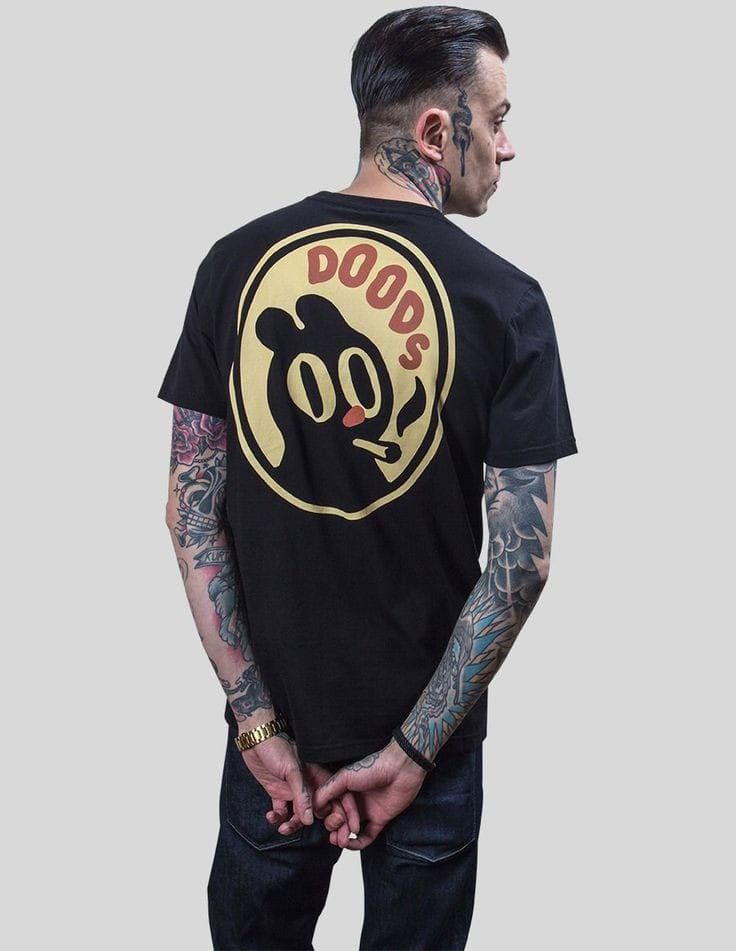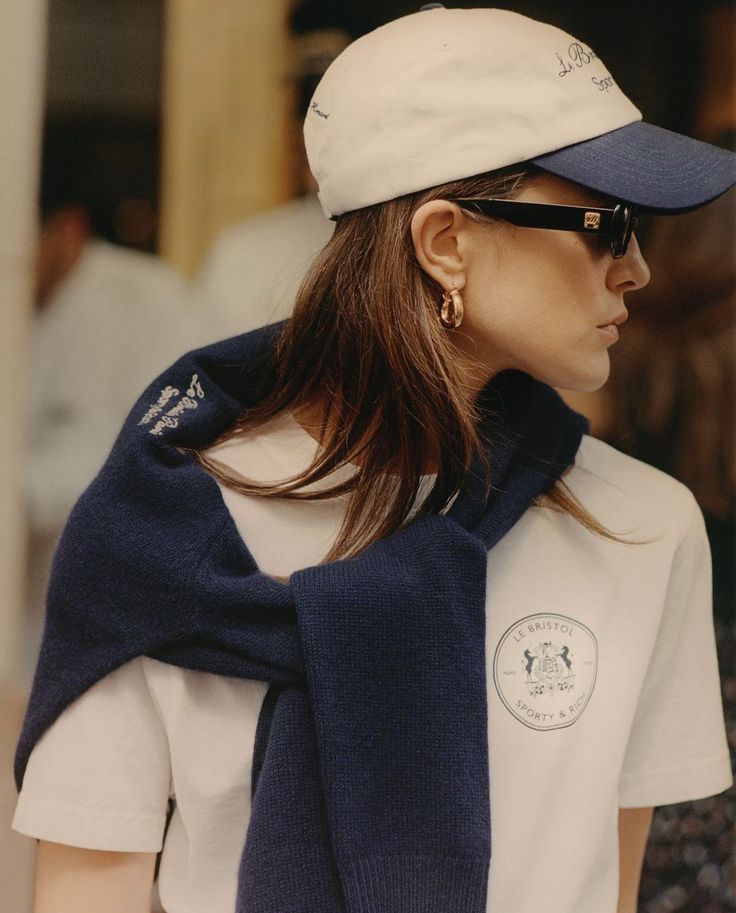
T-Shirt: The Icon of Casual Fashion and Culture
- No Comments
The T-shirt, often regarded as a simple piece of clothing, is far more than just a basic garment in contemporary wardrobes. Its story begins in the early 20th century and spans across decades of cultural and fashion revolutions. From being a utilitarian undergarment to becoming a global symbol of freedom, individuality, and self-expression, the T-shirt’s evolution is a remarkable journey that mirrors societal changes. Its widespread appeal transcends age, gender, class, and cultural boundaries, making it an indispensable part of modern life.
The Birth of the T-shirt
The T-shirt’s history traces back to the early 1900s, initially serving as an undergarment. The first real mention of the T-shirt as we know it today occurred during World War I when American soldiers were issued lightweight cotton shirts to wear under their uniforms. These shirts were more breathable than the woolen clothing typically worn at the time, especially in the sweltering heat of the battlefield.
Following the war, the popularity of T-shirts continued to rise, especially among American workers who found the garment to be practical, comfortable, and affordable. During the 1920s, T-shirts began to emerge as civilian wear, though they were still seen primarily as an undergarment. It wasn’t until Hollywood stars in the 1950s started donning the T-shirt as a casual statement of rebellion and youthfulness that the T-shirt started to earn its place as an everyday fashion piece.
The Evolution of the T-shirt: From Utility to Fashion Statement
By the 1950s, T-shirts had already moved out of the realm of workwear and were being worn in more social and public settings. Hollywood icons like Marlon Brando, James Dean, and Elvis Presley made the T-shirt famous when they wore it in classic films like A Streetcar Named Desire and Rebel Without a Cause. These stars embodied the essence of youthful rebellion, and the T-shirt became a symbol of this era’s cultural shift towards individualism.
In the 1960s and 1970s, the T-shirt’s cultural relevance only grew. During the counterculture movement, T-shirts were used as tools for political protest, social commentary, and artistic expression. Activists printed slogans on their shirts to communicate their anti-war sentiments, civil rights views, or support for environmental causes. At the same time, the rise of the music industry and its fandom led to the widespread popularity of band tees, which allowed fans to display their loyalty to their favorite musical acts.
The Graphic Tee Phenomenon
By the 1980s and 1990s, the graphic T-shirt had solidified its place as a fashion trend. The world of fashion was no longer simply about functionality; it had become a vehicle for self-expression. The graphic T-shirt was an extension of a person’s personality, with everything from political statements to pop culture references being emblazoned on the fabric.
T-shirts became canvases for art, with famous logos, iconic album covers, and original designs serving as the central imagery. The T-shirt industry boomed, as companies like Hanes, Fruit of the Loom, and Gildan mass-produced these items, making them accessible to a wider audience. T-shirts with graphic designs became incredibly popular in youth culture, particularly in connection with hip-hop, skateboarding, and other subcultures that prized individuality and rebellion.
The T-shirt in High Fashion
The T-shirt’s rise wasn’t limited to the streets. It also made waves in the fashion industry. By the late 1980s and early 1990s, designers like Jean-Paul Gaultier, Vivienne Westwood, and Alexander McQueen began incorporating T-shirts into their high-fashion collections. These designers used the T-shirt to challenge traditional notions of luxury and elegance, elevating it from a lowly casual item to a fashion statement.
In the early 2000s, the combination of streetwear and high fashion created a phenomenon that further solidified the T-shirt’s role in the fashion world. Brands such as Supreme, Off-White, and Balenciaga became known for their limited-edition graphic tees that carried bold logos or provocative designs. The T-shirt was no longer just for comfort; it was a status symbol, a sign of exclusivity, and a way for wearers to showcase their fashion-forward sensibilities.
T-shirt Design and Innovation
What sets the T-shirt apart from other clothing items is the endless variety of designs it can feature. Today, T-shirts are not limited to simple logos or slogans; they can incorporate intricate artwork, illustrations, and even digital prints. Innovations in fabric technology have allowed for unique textures, prints, and finishes, making the T-shirt an ever-evolving piece of fashion.
One of the most significant innovations in recent years is the rise of eco-friendly T-shirts. With growing awareness of environmental issues, many consumers are now seeking sustainable fashion options. Brands that focus on organic cotton, recycled materials, and water-saving production processes are becoming increasingly popular. As more designers and manufacturers adopt sustainable practices, the T-shirt’s role in eco-conscious fashion continues to evolve.
The Versatility of the T-shirt
Perhaps the greatest strength of the T-shirt is its versatility. It can be dressed up or down, and it pairs well with virtually any piece of clothing. For a casual look, a simple T-shirt with jeans or shorts is a timeless combination. For a more formal setting, a well-fitted T-shirt can be layered under a blazer, giving a polished yet relaxed appearance.
The graphic T-shirt, in particular, allows individuals to make bold statements with their clothing. Whether it’s a vintage rock band tee, a politically charged slogan, or a custom design that reflects one’s personality, graphic tees have become an essential form of personal expression. They convey messages and symbols that can tell a story, share a belief, or simply add a fun or playful touch to an outfit.
Moreover, the T-shirt has transcended gender norms. Once primarily associated with men’s fashion, T-shirts are now a central part of both men’s and women’s wardrobes. Their universal appeal makes them a staple item for people of all ages and backgrounds, from toddlers to seniors, and from athletes to artists.
The Environmental Impact of T-shirt Production
While the T-shirt is celebrated for its role in fashion, it is not without its environmental consequences. The production of T-shirts, especially through fast fashion, contributes to significant environmental problems. The cotton industry, which is responsible for a large portion of T-shirt manufacturing, is known for its high water consumption, pesticide use, and soil depletion. Furthermore, the rise of “fast fashion” has led to the mass production of low-quality garments that are often discarded after a short period of use.
With the global demand for cheap T-shirts, the environmental footprint of their production has raised concerns. It is estimated that millions of T-shirts are produced each year, many of which end up in landfills after only a few wears. As consumers become more aware of the environmental impact of their clothing choices, there is a growing movement toward sustainable fashion.
Many clothing brands have begun to take responsibility for the impact of their production processes. Companies such as Patagonia, Everlane, and Reformation have implemented ethical sourcing practices, focusing on environmentally friendly materials, fair labor practices, and low-impact production techniques. Additionally, there is a growing interest in second-hand and upcycled fashion, which has led to an increase in the popularity of vintage T-shirts and resale platforms.
The Future of the T-shirt
As we look to the future of fashion, the T-shirt will undoubtedly remain a key player. With technology and sustainability leading the charge, we can expect T-shirt designs to continue evolving in exciting ways. Digital prints, wearable technology, and smart fabrics may soon become commonplace, allowing for even more innovation in T-shirt design.
Eco-friendly T-shirts made from sustainable materials will likely become even more prevalent, as the fashion industry responds to consumer demand for more responsible clothing options. We may also see a shift towards more minimalist designs as people focus on quality over quantity in their wardrobes.
The T-shirt’s versatility, comfort, and cultural significance ensure that it will continue to be an enduring staple in fashion. From the streets to the runway, from casual wear to high fashion, the T-shirt is here to stay.
Previous Post


T-Shirt: The Icon of Casual Fashion and Culture

The Ubiquity and Versatility of T-Shirts

The Evolution and Cultural Impact of the T-Shirt

T-Shirt: Effortless Style Starts Here

